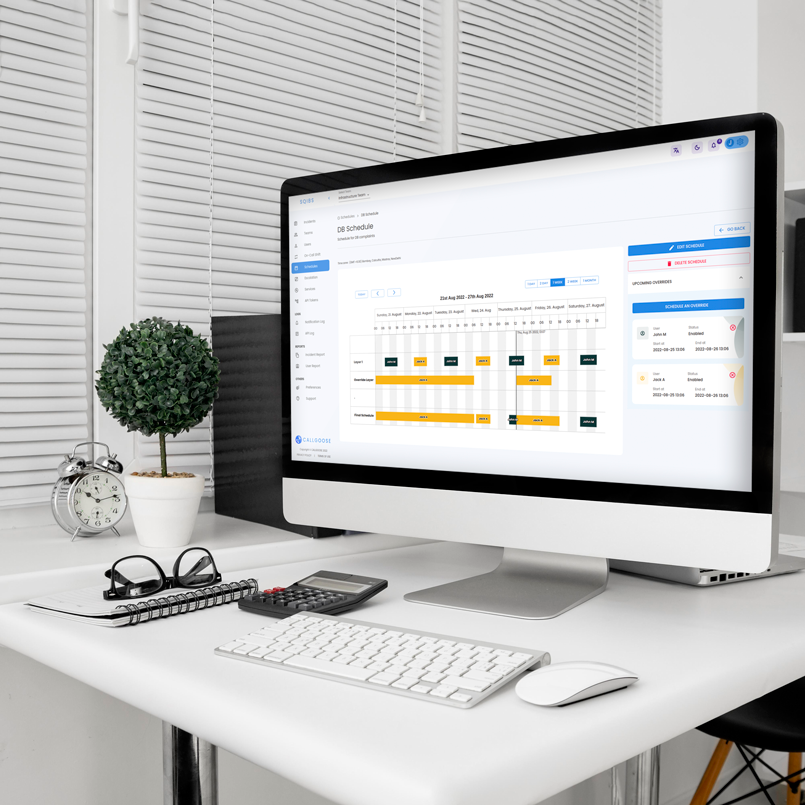
CALLGOOSE

CALLGOOSE
BLOG
05 September 2024 | Tony Philip
6 Minute Read
In today's fast-paced digital landscape, ensuring the reliability and performance of systems and equipment is essential for organizations to maintain operational efficiency and meet customer expectations. To achieve this, it's crucial to understand and leverage key reliability metrics such as Mean Time Between Failures (MTBF), Mean Time to Repair (MTTR), Mean Time to Detect (MTTD), and Mean Time to Failure (MTTF). In this blog post, we'll delve into the nuances of these metrics, their significance, calculation methods, and strategies for improvement.
Understanding MTBF:
MTBF, or Mean Time Between Failures, is a critical reliability metric that measures the average time between failures of a repairable system during normal operating conditions. It provides insights into the reliability and durability of equipment by calculating the total uptime of a system and dividing it by the number of failures that occur within that time frame.
Why MTBF is Important:
How to Calculate MTBF:
MTBF is calculated by dividing the total operational time (uptime) of a system by the number of failures that occur during that period. The formula for MTBF is as follows:
MTBF = Total Uptime / Number of Failures

Strategies to Improve MTBF:
Understanding MTTR:
MTTR, or Mean Time to Repair, is a crucial metric that measures the average time it takes to repair a failed system or equipment and restore it to normal operation. It encompasses the entire repair process, including detection, diagnosis, repair, and restoration activities.
Key Points for MTTR:
Additional Insights on MTTR:
In conclusion, understanding and optimizing system reliability metrics such as MTBF and MTTR are critical for organizations seeking to enhance operational resilience, minimize downtime, and improve overall performance. By leveraging these metrics, organizations can proactively identify potential failure risks, implement preventive maintenance strategies, and streamline repair processes to ensure the uninterrupted operation of critical systems and equipment. With a comprehensive understanding of these metrics and a proactive approach to reliability management, organizations can achieve greater operational efficiency, customer satisfaction, and business success.
Learn how Callgoose SQIBS can help to reduce the Downtime for businesses.
By leveraging different tools and using Callgoose SQIBS Incident Management and Callgoose SQIBS Automation Platform , you can set up robust event-driven and Incident auto-remediation automation workflows to enhance efficiency, reliability, and responsiveness in your IT operations.
Refer to Callgoose SQIBS Incident Management and Callgoose SQIBS Automation for more details
Callgoose SQIBS is a real-time Incident Management, Incident Response and Automation platform with an advanced On-Call schedule feature that keeps your organization more resilient, reliable, and always on. Callgoose SQIBS can seamlessly integrate with any software's or Tools including any AI to reduce alert noise , automate the workflows and improve the effectiveness of escalation policies for global teams. Several communication channels are supported, including Phone call, SMS, Mobile app push notifications, and many more. Several collaboration tools supported including Microsoft Teams & Slack.
Callgoose SQIBS has 'Automation Platform.' This feature offers Runbook Automation.
Runbook automation plays a crucial role in enhancing incident response capabilities, enabling organizations to remediate incidents faster, minimize downtime, and ensure business continuity. By automating repetitive tasks, standardizing procedures, and enabling rapid execution of response actions, runbook automation empowers IT teams to respond swiftly and effectively to incidents, ultimately reducing the impact on business operations and enhancing overall resilience.

CALLGOOSE
SQIBS
Advanced Automation platform with effective On-Call schedule, real-time Incident Management and Incident Response capabilities that keep your organization more resilient, reliable, and always on
Callgoose SQIBS can Integrate with any applications or tools you use. It can be monitoring, ticketing, ITSM, log management, error tracking, ChatOps, collaboration tools or any applications
Callgoose providing the Plans with Unique features and advanced features for every business needs at the most affordable price.
Unique Features